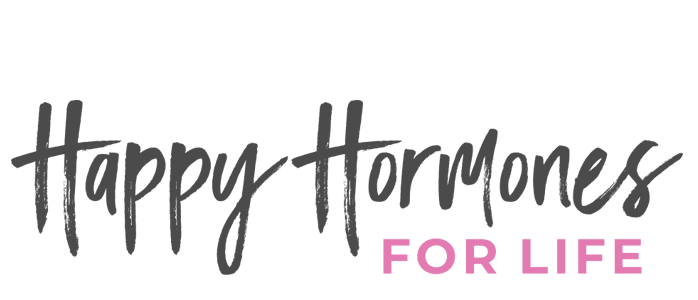Step 4 is about making sure we are doing the best hormone exercise. Moving and exercising to support our hormones, but getting the right balance for our own bodies, not what someone is telling us we SHOULD do (usually male and under 40!).
How much you move significantly affects your hormone balance. Too much sitting and too little moving in general is definitely a hormone disruptor, but equally too MUCH exercise can also be a bad thing.
Exercise is vital for hormone balance, as not only does it help get nutrients around the body but it also has been shown to reduce stress levels and also increase your insulin function.
If you get the right balance, it can work brilliantly. If you get it slightly wrong, it can deplete your energy stores, increase carb and sugar cravings, and actually make your body HANG ON TO FAT even more! Ever started a new fitness routine and wondered why you weren’t losing weight?
Watch the video on this topic;
Or listen to the podcast episode;
How does exercise affect our Feisty 4 hormones;
- Cortisol
Lack of movement or too much sitting is a stress on the body. Circulation reduces, metabolism slows and fat storing increases. The right amount of regular exercise helps to reduce stress and improve mood. But too much exercise is also a stress on the body!
Exercise raises cortisol and that’s natural, but too much exercise when your energy reserves aren’t enough can cause too much cortisol over time. Over-exercising can increase the risk of muscle loss, increased infections, increased risk of injury, fatigue and poor recovery. You need enough time between exercise sessions to recover properly and reduce the stress response. If you’re a gym bunny or addicted to long cardio, you need to take more rest if you’re hormones are out of whack. And if you feel tired or stressed out already, exercise may help but it might also deplete you even more.
- Insulin
Exercise has a direct effect on how insulin works. It increases your cells response to insulin (something called sensitivity). That’s really important as it means that insulin can get into your cells to deliver the glucose it’s carrying – and once in the cell it can be made into energy. When insulin can’t get into the cell because the receptor isn’t very sensitive to it, you can get insulin resistance, the precursor to diabetes. So exercise helps that whole process.
- Thyroid
A sluggish circulation can impair the delivery of nutrients required for your thyroid to work properly (including iron). Lack of exercise slows your metabolism and can increase your fat:muscle ratio, further inhibiting your thyroid and fat-burning ability. Weight training or resistance work helps to build muscle, and muscle burns more energy than fat, so it helps your thyroid and your metabolism.
- Oestrogen
Studies have shown that exercise helps to reduce your risk of breast cancer by reducing the amount of more dangerous oestrogen metabolites in the body. Extreme exercise however can increase cortisol and lower oestrogen too far, disrupting your regular cycle and weakening your bones.
Getting the best hormone exercise for you
So what is the right type and amount of activity for hormone balance? Well that depends a lot on your own individual needs, health and circumstances. But let’s look at some of the best hormone exercise for balance.
- Walking – underrated! I’m a huge fan of walking. It’s easy to do, cheap (no gym membership or equipment involved) and it has huge benefits for stress reduction, mood, bones, muscle.
- Yoga , pilates – all round ticks all boxes
- Weights – Muscle mass declines as we age (at a rapid rate if you don’t do any strength training!). Strength training also lowers your risk of osteoporosis, which is a risk as we head towards menopause.
- HIIT – High intensity interval training (or ‘burst’ training) has been shown to burn fat more effectively than aerobic exercise. As well as strengthening your lungs and heart, it also increases human growth hormone (HGH), the hormone that is abundant when we are young, making us healthy and strong, and declines rapidly as we age. Another huge advantage is that HIIT improves insulin sensitivity, a great result for your waistline and risk of serious disease.
- Movement – NEAT – Non Exercise Activity Thermogenesis is being studied for it's effects on your metabolism. This is any movement that is not official exercise, but is not sitting. The more you can do of this the better!
And lastly we have to take care of our core and pelvic floors as we get older! a personal recommendation is the MUTU system run by Wendy Powell. MUTU stands for mummy tummy, It’s the one stop exercise programme to strengthen your core, your pelvic floor and keep you fit in a safe way. And the best thing is that it’s all online, so you can do it in the privacy of your own home.
I do it myself and love it!
I haven’t included endurance-type cardio in this list, not because there’s anything wrong with it (there are lots of benefits to cardio work!), but it just doesn’t make my top 5 for hormone balance after 40. If you run long distances, that’s fine, as long as you have the energy for it, you don’t get regular injuries and you’re not suffering from adrenal fatigue.
As a very basic rule, if exercise recharges your energy levels, then that’s an indication that it’s doing you good. If you feel depleted afterwards, it may be taxing your adrenals and using up vital energy reserves. Best to do some gentle activity until your reserves are topped up.
Hope that was helpful and if you ened any personalised support with your hormones, do message me to book in a free discovery call.
As always, contact us if you’d like to get deeper help with your hormones.

